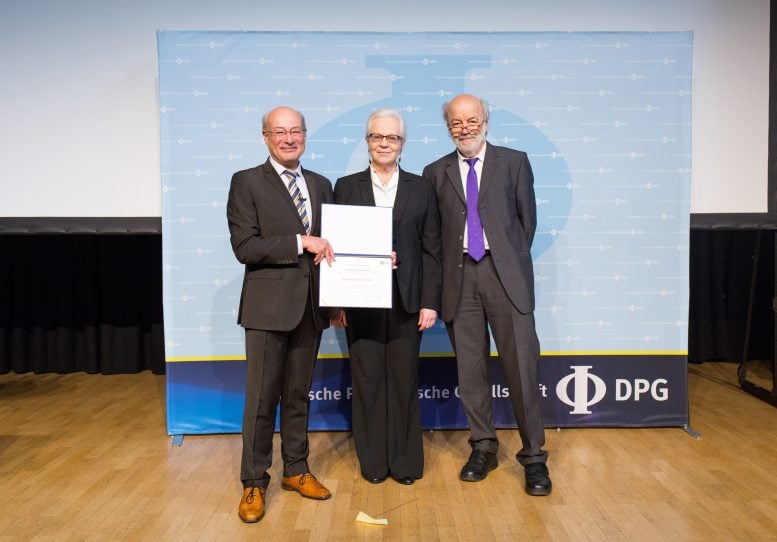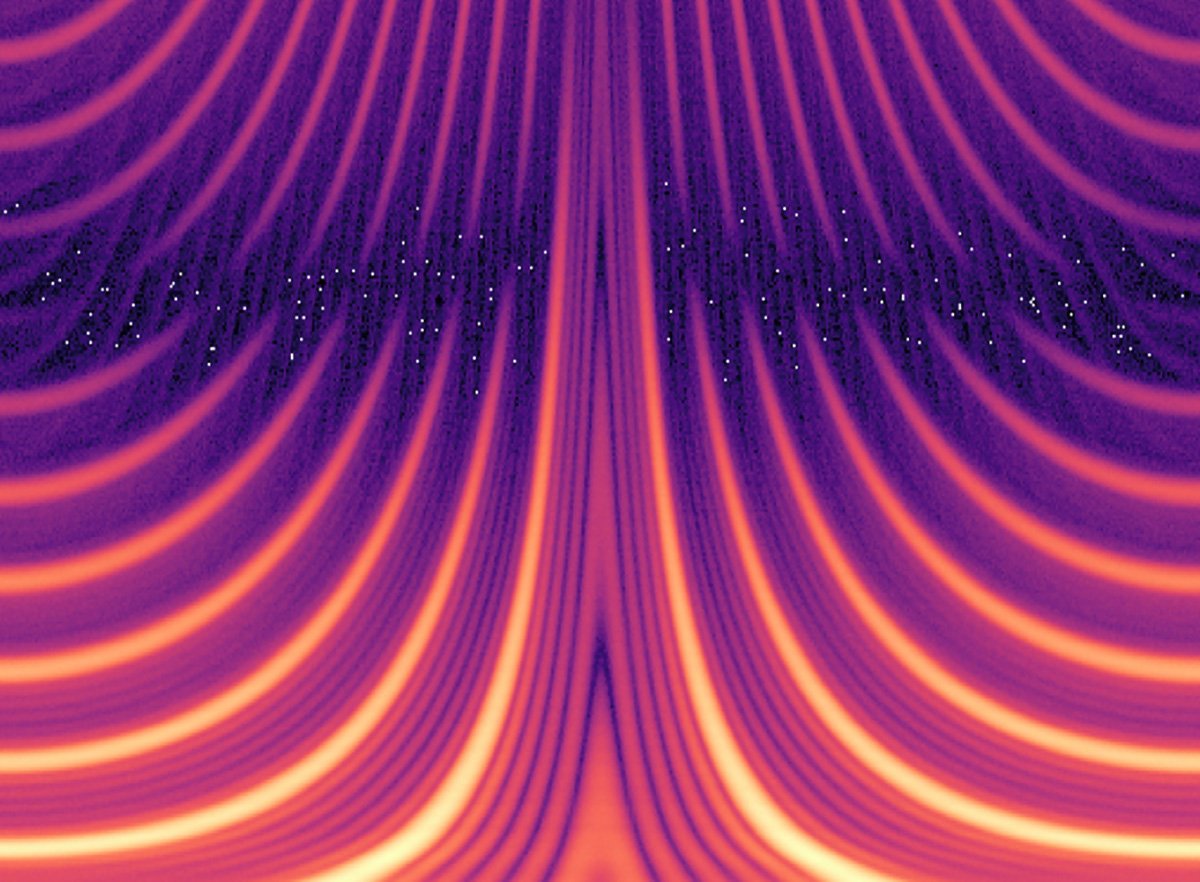By
Illustration of a nuclear frequency comb displaying single photons as visualized on a logarithmic scale from dark to bright colors, with brighter colors indicating instances of time where the stored photons have a higher probability of being retrieved. These instances occur closer together for higher energy spacings and are more spread out in time for lower energy spacings. Credit: DESY/Sven Velten
Researchers have developed a groundbreaking quantum memory for X-rays, allowing extended memory times and paving the way for advanced quantum optics applications, including 
Dr. Olga Kocharovskaya (center), accepting her 2024 Herbert Walther Award honoring pioneering research and leadership in quantum optics and atomic physics from German Physical Society (DPG) President Jochim Ullrich (left) and Optica President Gerd Leuchs (right) during the DPG meeting in Freiburg, Germany, this past March. Credit: DPG/Daab 2024
Development of a New X-ray/Nuclear Protocol
“The direct extension of the optical/atomic to X-ray/nuclear protocols proves to be challenging or impossible,” explains Dr. Xiwen Zhang, a postdoctoral researcher in Kocharovskaya’s group who participated in the experiment and co-authored the team’s paper. “Thus, a new protocol was suggested in our earlier work.”
According to Zhang, the idea behind the team’s new protocol is very simple, at least in terms of quantum fundamentals. Essentially, a set of moving nuclear absorbers forms a frequency comb in the absorption spectrum due to the Doppler frequency shift caused by the motion. A short pulse with the spectrum matching a comb absorbed by such a set of nuclear targets will be re-emitted with the delay determined by the inverse Doppler shift as a result of the constructive interference between different spectral components.
“This idea was successfully realized in our current experiment featuring one stationary and six synchronously moving absorbers that have formed a seven-teeth frequency comb,” Zhang added.
Zhang says nuclear coherence lifetime is the limiting factor that determines the maximum storage time for this type of quantum memory. For instance, using longer-lived isomers than the iron 57 isotope the team chose for their current study would result in a longer memory time.
Regardless, he notes that working at a single-photon level without losing information qualifies the nuclear frequency comb protocol as a quantum memory, which is a first for X-ray energies. The next steps planned by the team include on-demand release of the stored photon wave packets, which could lead to the realization of the entanglement between different hard X-ray photons — the main resource for quantum information processing. The team’s research also highlights the potential for extending optical quantum technologies to the short wavelength range, which is intrinsically less “noisy” due to averaging of fluctuations over a large number of high-frequency oscillations.
Kocharovskaya says the challenging possibilities are intriguing and that she and her collaborators look forward to continuing to explore the potential of their tunable, robust, and highly versatile platform to advance the field of quantum optics at X-ray energies in the near future.
Reference: “Nuclear quantum memory for hard x-ray photon wave packets” by Sven Velten, Lars Bocklage, Xiwen Zhang, Kai Schlage, Anjali Panchwanee, Sakshath Sadashivaiah, Ilya Sergeev, Olaf Leupold, Aleksandr I. Chumakov, Olga Kocharovskaya and Ralf Röhlsberger, 26 June 2024, Science Advances.
DOI: 10.1126/sciadv.adn9825
The study was funded by the Deutsche Forschungsgemeinschaft, DESY, and the U.S. National Science Foundation.











/https://tf-cmsv2-smithsonianmag-media.s3.amazonaws.com/filer_public/34/31/3431771d-41e2-4f97-aed2-c5f1df5295da/gettyimages-1441066266_web.jpg)








Discussion about this post